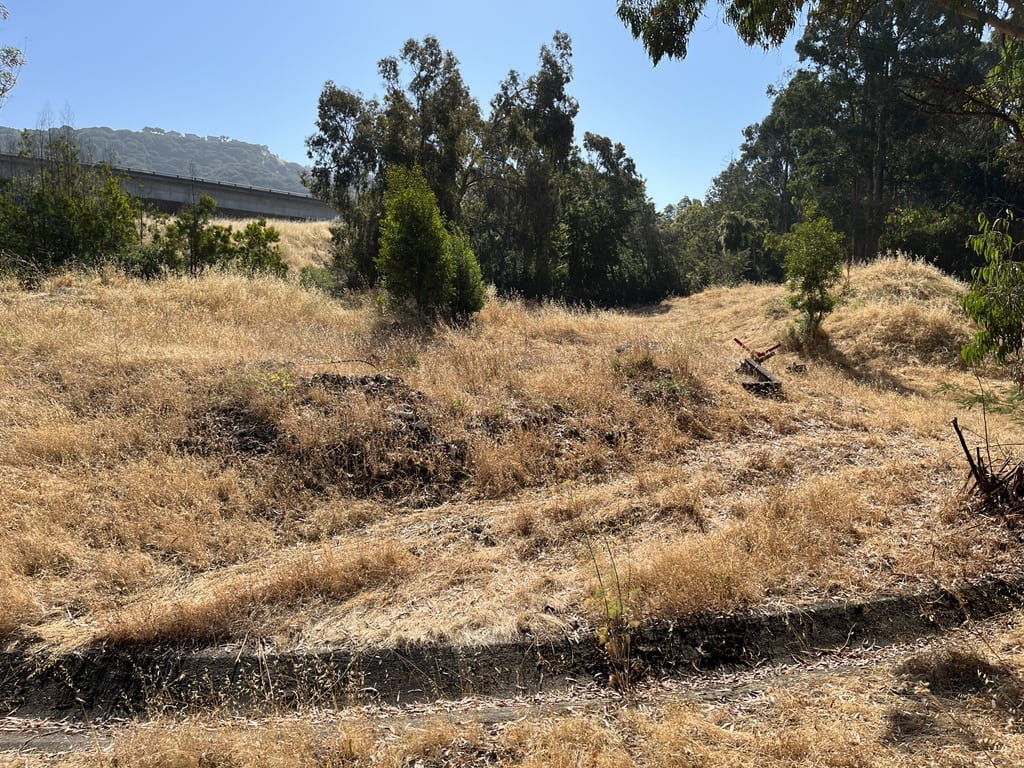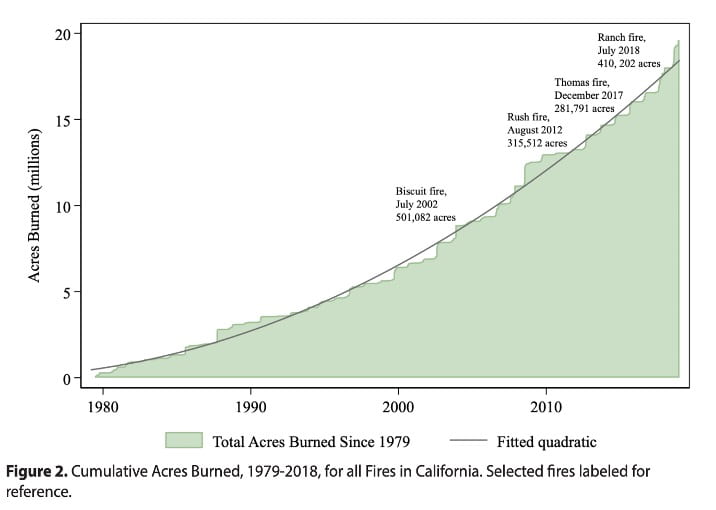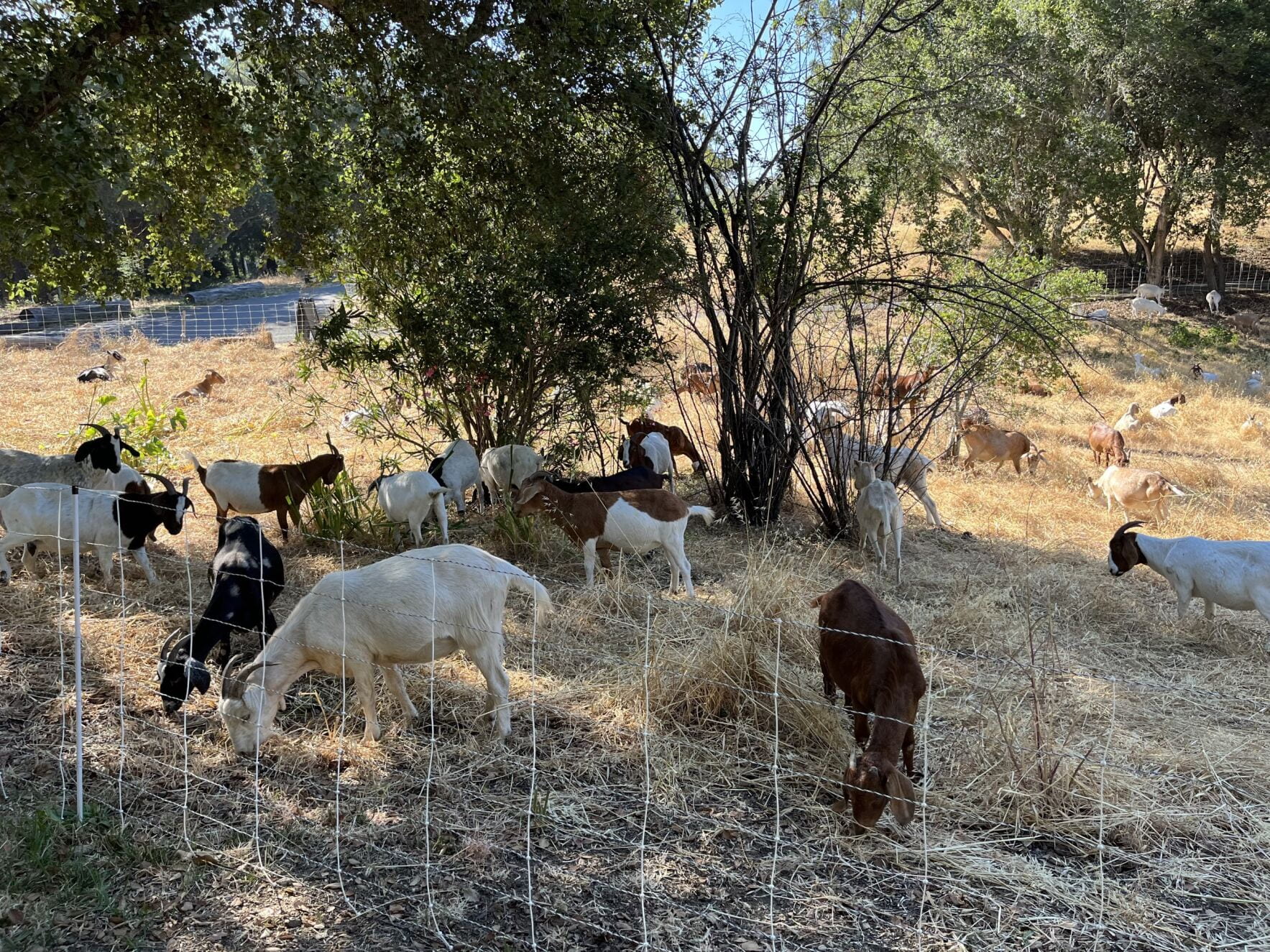There’s a rich scent of freshly overturned dirt and a musky odor of goats on the serene landscape of Mills College at Northeastern University, nestled in the heart of Oakland, California. They may be cute but don’t distract them because they have a job to do. Acting as living lawnmowers, little by little some 484 goats gorge on acres of dry grasses, shrubs, and brush. The Mills College campus is turned from a heavily forested campus to a groomed, fire-safe environment. They have worked hard, and it is time to see them off.
Mills College at Northeastern University has been at the forefront of implementing innovative and eco-friendly solutions for wildfire prevention. For the past 25 years, the college has implemented the unique approach of hiring goats as an environmentally friendly and cost-effective way to mitigate the risk of wildfires.


Before and after goat grazing of a large part of dry grass at the Oakland campus. Andrew Gonzales of Mills College at Northeastern University
The impact of climate change and more intense weather patterns has led to a significant spike in temperatures, and with “decreased humidity for larger portions of the year, the vegetation in the city of Oakland and throughout the state of California has become much drier, dramatically increasing the risk of wildfires,” said Michael Hunt, the Chief of Staff and Public Information Officer of the Oakland Fire Department.
In 2023 alone, there have been 3,619 wildland fires burning 22,325 acres (about the area of Manhattan) of California land as of July. And in 2022, there were three fires in Alameda County CA., where Mills College is located, burning 250 acres. The state of California has been grappling with some of the most intense wildfires seen in the past 80 years, with more acres burned each decade.

Graph provided by: The Nature Conservatory
With wildfires becoming more unpredictable, controlling highly flammable vegetation has become a crucial aspect of fire mitigation efforts. And leading this charge is the Oakland Planning, Real Estate, and Facilities team at Mills College, making sure the campus is at the top of its wildfire prevention game with even more mitigation maintenance. Hardworking staff remove leaves and other flammable debris from roofs and gutters, dispose of all green waste from landscape maintenance in compost areas away from buildings, and so much more, explained Michael Cupp, the Director of Facilities at the NU Oakland campus.
Mills College and the Oakland Fire Department are both working hard to deploy sustainable wildfire prevention practices. And both have concluded that goats are the way to go.
They eat what is known as “low-level ladder fuels [which] often are the ignition source and the spread of wildfires,” said Hunt. With higher grasses, the potential for a fire to rapidly ascend to the canopy level and residential areas is significantly greater.

Goats grazing on dry vegetation. Andrew Gonzales of Mills College at Northeastern University
Goats’ efficient grazing directly addresses this risk, making them an invaluable asset in creating a safer environment for both campus inhabitants and nearby communities.
“The goats consume the dry and overgrown vegetation; they create natural firebreaks that help to prevent and slow down wildfires. Additionally, the goats’ grazing activities promote the growth of fresh, green vegetation, which is less likely to catch fire and can act as a fire-resistant barrier,” said Cupp.
While many organizations use manual labor to mitigate forest fires, they involve gas or battery-powered machinery and chemical pesticides to remove flammable vegetation. Mills College has embraced a greener approach.
Goats are skilled climbers, and they can easily navigate difficult terrain much better than heavy machinery like a tractor. Their efficient grazing practices are a natural and eco-friendly way of doing exactly what these methods accomplish. And the goats graze on around 80-100 acres, a significant portion of the 135-acre campus, according to Andrew Gonzales, the Sustainability Manager at Mills College.
The more traditional methods are often unsustainable and produce a substantial amount of natural waste. The goats not only save the college money by minimizing the need to hire workers to physically cut and remove the greenery, but they reduce the amount of waste the campus produces by consuming vegetation that would have been hauled away.
Not only do the goats consume and remove combustible fuels –overgrown vegetation– they also “contribute to soil health by fertilizing the land with their droppings, and their grazing habits support biodiversity and plant regeneration,” said Cupp who is responsible for ensuring the efficient operation, maintenance, and improvement of the Mills campus.
The importance of implementing wildfire mitigation tactics into yearly spring clean-up plays a crucial role in preventing wildfires. Simple actions, such as mowing your lawn, raking away leaves, or cleaning your gutters, can significantly contribute to keeping our earth safe during these times of climate uncertainty. No matter what method you use, fire prevention is a shared responsibility, and hopefully, the Mills Goats will inspire you to take on sustainable practices.
Mills College stands at the forefront of the future of wildfire prevention with an unexpected yet remarkably effective approach; it’s musky, odorous, and cute. Goats are powerful allies in safeguarding our environment.
Written by Julia Laquerre, August 9th, 2023
